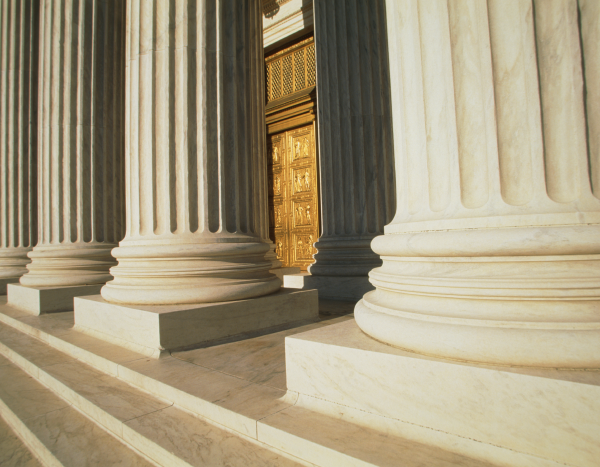
PILCOM – Has the law taken U-Turn with respect to foreign remittance?

The clutches of withholding tax provisions have not pardoned anyone when it comes to discharging obligation under the Income-tax Act and the game of cricket is nothing different. Nearly two and a half decades after the Pak-Indo-Lanka Joint Management Committee (“PILCOM” i.e. the assessee) organised the 1996 ICC World Cup matches in India, Pakistan and Sri Lanka, the Apex Court has upheld that payment of guarantee money by PILCOM to Non resident sports association (“NRSA”) represented income which is deemed to accrue or arise in India. The SC has ruled that such payment of guarantee money was squarely covered u/s 115BBA of Income Tax Act, 1961 (“the Act”) and PILCOM was liable for withholding obligations as per section 194E of the Act. Further while adjudicating the matter, the SC has also clearly set out that the obligation to withhold the taxes under the Act is not curtailed by the provisions of Double Taxation Avoidance Agreements (“DTAAs”).
Before going into the facts, it is pertinent to refer to section of 115BBA read with section 194E of the Act which was the moot question for consideration before the Apex Court:
115BBA Tax on non-resident sportsmen or sports associations
- Where the total income of an assessee
- …
- being a non-resident sports association or institution, includes any amount guaranteed to be paid or payable to such association or institution in relation to any game (other than a game the winnings wherefrom are taxable under section 115BB) or sport played in India,
- being an entertainer, who is not a citizen of India and is a non-resident, includes any income received or receivable from his performance in India, the income-tax payable by the assessee shall be the aggregate of
- the amount of income-tax calculated on income referred to in clause (a) or clause (b) or clause (c) at the rate of twenty percent; and
- …
194E Payments to non-resident sportsmen or sports associations
Where any income referred to in Section 115BBA is payable to a non-resident sportsman (including an athlete) who is not a citizen of India or a non-resident sports association or institution, the person responsible for making the payment shall, at the time of credit of such income to the account of the payee or at the time of payment thereof in cash or by issue of a cheque or draft or by any other mode, whichever is earlier, deduct income tax thereon at the rate of twenty percent.
Brief facts of the case
PILCOM is a committee which was formed by cricket boards of India, Pakistan and Sri Lanka for the purpose of hosting the ICC World Cup of 1996. ICC (which is a not profit organization and which controls and conducts the game of cricket in various countries) selected PILCOM on the basis of their competitive bids to host the 1996 World Cup. PILCOM was required to pay varying guarantee amounts to the NRSA as well as to the ICC in connection with conducting the preliminary phases of the tournament and also for the purpose of promotion of the game in their respective countries. For this, two bank accounts were opened by PILCOM in London to be operated jointly by the representatives of Indian and Pakistan cricket boards, in which the receipt from sponsorship, T.V. rights etc. were deposited and from which the expenses were met. The surplus amount remaining in the said bank account was decided to be divided equally between the cricket boards of Pakistan and India after paying a lump-sum amount to Sri Lankan board as per mutual agreement.
PILCOM had made seven types of payments as per the terms of the agreement, to NRSA as well as to the ICC without deducting tax at source. The Income Tax Officer (“ITO”) referring to the provisions of section 115BBA read with section 194E, held that PILCOM is an assessee in default for non-deduction of tax on all the seven types of payments made i.e. (i) Guarantee money to 17 countries which did not participate in the World Cup, (ii) amounts transferred from London to Pakistan & SriLanka for disbursement of prize money, (iii) payment to ICC, (iv) payment for ICC trophy for qualifying matches held outside India, (v) Guarantee money to South Africa & UAE, both who did not play any matches in India, (vi) payments to few other countries with whom India has DTAA, (vii) Guarantee money paid to Pakistan, Zimbabwe, Holland & West Indies. The CIT(A) granted partial relief. Being aggrieved, both assessee and department filed an appeal before the ITAT. The Tribunal quashed the findings of the ITO in respect of first five payments . With regards to other two types of payments, they affirmed the finding of the CIT(A) and ruled that certain sums from the total payments made, were taxable in India, but only to the extent that the payments were related to matches played in India i.e. 17 out of 37 matches (45.94%). The rest of the payments which were not related to matches played in India, were held not to be taxable in India.
Findings of the High court
The matter travelled upto HC and affirming the view of the tribunal, the HC ruled that if any amount including the guaranteed amount is paid to any NRSA in relation to any match played in India, the said income has to be subjected to tax deduction at source. The HC further held that it is significant to note that section 115BBA r.w.s. 194E nowhere states that the income should be chargeable to tax for purposes of withholding tax. It therefore concluded that once the income accrues in India, tax deduction is a matter of course.
Further, HC suo-moto analysed and held that obligation under section 194E is not diluted by the provisions of DTAA. Deduction of tax does not amount to final payment of tax by the non-residents. There is a fundamental distinction between the deduction at source by the payer and obligation to pay tax and upheld the order of the tribunal.
Verdict by the Apex Court
Aggrieved by the decision of the HC, PILCOM preferred an appeal before the Apex Court. PILCOM invited attention of the members to the decision of the Hon’ble SC in various cases including the decision of the Apex Court in the case of GE India Technology Centre Pvt Ltd vs CIT and CIT vs Eli Lilly and Co (India) Pvt Ltd.
The principal issue before the Apex Court was whether income of NRSA was deemed to accrue or arise in India. The apex court referring to various provisions of law relevant in this context, held that expression ‘in relation to’ emphasises the connection between the game or sport played in India on one hand and the Guarantee Money paid or payable to the NSRA on the other hand. Once the connection is established, the liability under the provision must arise.
The Apex court highlighted that the rulings given in the case of GE India Technology Centre Pvt Ltd vs CIT and CIT vs Eli Lilly and Co (India) Pvt Ltd were not applicable in the present case and held that payments made to the NSRA in the present case represented their income which accrued or arose or was deemed to have accrued or arisen in India. Consequently, PILCOM was liable for TDS withholding in terms of Section 194E of the Act.
On DTAA applicability aspect, the SC affirmed the view of the HC and held that advantage of the DTAA can be pleaded and taken by the real assessee on whose account the deduction is made and not by the payer. In case the exigibility to tax is disputed by the non-resident from whose account the deduction is made, the benefit of DTAA can be pleaded only by that non-resident and if such a case is made out by the non-resident, the amount in question will always be refunded with interest.
Whether payments u/s 195 would also get covered by the above principle?
An interesting question which comes up for consideration is whether similar principle would apply when remittances are made to non-resident and TDS needs to be deducted u/s 195 of the Act? Whether department can argue that DTAA provisions needs to be ignored even if tax is deductible as per section 195 by stating that advantage of the DTAA can be pleaded and taken only by the real assessee on whose account the deduction is made and not by the payer?
To find an answer, one may refer to the two important decisions given by the Apex Court which may have far reaching impact while analysing the issue under consideration. SC in the case of GE India Technology Centre Pvt Ltd vs CIT has held that the most important expression in Section 195(1) consists of the words chargeable under the provisions of the Act. The obligation for withholding is limited to the appropriate proportion of income chargeable under the Act forming part of the gross sum of money payable to the non-resident. While interpreting a section one has to give weightage to every word used in that section. While interpreting the provisions of the Income Tax Act one cannot read the charging sections of that Act dehors the machinery sections. The Act is to be read as an integrated code.
Further one can see that there is some sort of similarity in the GE India case (supra) and in the case of CIT vs Eli Lilly and Co (India) Pvt Ltd. If one looks at Section 192, one will find that it imposes statutory obligation on the payer to deduct tax when he pays any income “chargeable under the head ‘Salaries’”. Similarly, Section 195 imposes a statutory obligation on any person responsible for paying to a non-resident any sum “chargeable under the provisions of the Act”, which expression, as stated above, does not find place in other sections of Chapter XVII.
From the above rulings, one may conclude that section 195 specifically talks about withholding obligations only when the remittance is chargeable to tax under the Act. When the income is not chargeable to tax, there would be no withholding. However, the payment in question was made under section 194E which specifically refers to income under section 115BBA which does not have the phrase “chargeable to tax” in its provisions.
Reference to section 195 and section 2(37A)
At this moment, it is pertinent to refer to section 195 of the Act which states that:
195 Other Sums
195. (1) Any person responsible for paying to a non-resident, not being a company, or to a foreign company, any interest (not being interest referred to in section 194LB or section 194LC) or section 194LD or any other sum chargeable under the provisions of this Act (not being income chargeable under the head “Salaries”) shall, at the time of credit of such income to the account of the payee or at the time of payment thereof in cash or by the issue of a cheque or draft or by any other mode, whichever is earlier, deduct income-tax thereon at the rates in force
Further rates in force has been defined u/s 2(37A) of the Act to mean as under:
2(37A) “rate or rates in force” or “rates in force”, in relation to an assessment year or financial year, means:
- …..
- …….
- for the purposes of deduction of tax under section 194LBA or section 194LBB or section 194LBC or section 195, the rate or rates of income-tax specified in this behalf in the Finance Act of the relevant year or the rate or rates of income-tax specified in an agreement entered into by the Central Government under section 90, or an agreement notified by the Central Government under section 90A, whichever is applicable by virtue of the provisions of section 90, or section 90A, as the case may be;
From the above, a clear analogy can be drawn that withholding u/s 195 of the Act has to be done as per following:
- As per the rates in force which are given in Part II of Schedule I of the Finance Act or
- As per the rate specified in an agreement entered into by the government u/s section 90 (i.e. as per DTAA)
Section 195 r.w.s 2(37A) gives the option to the assessee to withhold the taxes as per Part II of Schedule I or as per DTAA. The assessee/ deductor has an option to choose under which scenario he would be deducting the taxes. Especially in a case where withholding obligation is on the assessee/ deductor and the remittance is not liable to be taxed in India in the hands of the non-resident recipient as per the provisions of DTAA, the assessee/ deductor would like to access the treaty benefits in order to reduce the cost of remittance.
Further, on plain reading provisions of section 194E, tax ought to be deducted at the rate of twenty percent and it does not have reference to deduct tax as per rates in force. Where the intention of the legislature was to deduct taxes at rates in force after due consideration of treaty benefits/ rates as per Part II of Schedule I of Finance Act, the same has been provided in relevant sections of Chapter XVIIB. Accordingly, one may conclude that the decision in the case of PILCOM is one of its kind and will apply in those cases where payments are covered under provisions other than section 195 and which are similar to those contained in section 194E, leaving remittances made u/s 195 of the Act unaffected.
CBDT circular no 728 dated 30.10.1995
Further the CBDT circular no 728 dated 30.10.1995 also makes the above proposition clear in terms of section 195 by stating that in the case of a remittance to a country with which a DTAA is in force, the tax should be deducted at the rate provided in the Finance Act of the relevant year or at the rate provided in the DTAA, whichever is more beneficial to the assessee. Hence the assessee/deductor, while complying with the withholding provisions may take a recourse of DTAA, if the same is more beneficial. Further since the circular issued by the CBDT is binding on the tax authorities, a tax officer is not allowed to take a view contrary to the same.
Issuance of accountant report in Form 15CBs
In Form 15CB (certificate issued by an accountant), item no 8 deals with Taxability under the provisions of the Income-tax Act (without considering DTAA) and item no 9 deals with if income is chargeable to tax in India and any relief is claimed under DTAA. Even from this one can ascertain that while issuing a certificate for outward remittance, an accountant can consider the provisions of DTAA if they are more beneficial to the assessee/ deductor provided all the relevant documents for accessing the treaty benefits are made available by the non-resident recipient.
Recent Insights
- Revision in the Definition of "Small Company" under the Companies Act, 2013
- Implementation of the Four Labour Codes - Effective 21 November 2025
- Exploring Poultry Valuations
- SEBI Amends Framework Relating to Anchor Investors in the Book Building Process
- SEBI Revises Minimum Information Requirements for Related Party Transaction Approvals
SUBSCRIBE TO OUR INSIGHTS
We are constantly working on sharing relevant alerts & publications to keep you informed on the latest developments.



Our Comments
Based on the above, it can be said that once the department tries to invoke the PILCOM ruling, the factual difference needs to be borne in mind. The ruling of PILCOM, in our view, would operate in isolation without impacting the earlier decisions of the apex court and its applicability would also be a very fact specific exercise. Further as mentioned above, a co-joint reading of section 195(1) r.w.s 2(37A) would come to the rescue of the assessee/ deductor to allow them access the treaty as and when the payments are made and PILCOM would not act as a barrier.